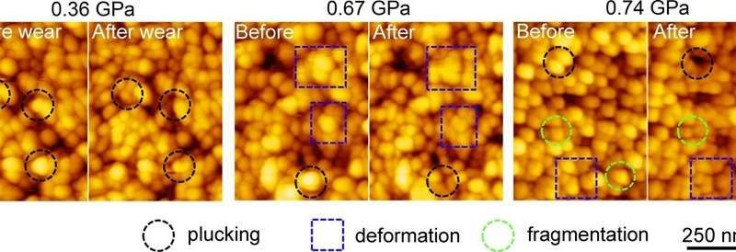Oral Hygiene Can't Prevent Nano-Scars On Teeth, Chewing Causes 'Microwear': Study

Meticulous oral hygiene can ensure that your pearly whites remain disease free, but the scars caused by chewing food leave an impact on a nanoscale.
According to a new study, whatever your diet may be, food leaves behind traces and tears. These marks on the enamel, known as microwear, have led to new discoveries about the nature of our teeth and the diet of our human ancestors.
We all know that certain foods leave a more visible effect on the teeth than others. Coffee is known to stain the teeth yellow. Now, a recent study has shown that just chewing can cause wear and tear on the enamel.
A team of researchers has studied the effects of chewing food on a nano-scale using a microscope. Peter Ungar, professor of anthropology, and Ryan Tian, associate professor of inorganic chemistry, worked with researchers at the Southwest Jiaotong University in Chengdu, China, on this project and their results have been published in the Journal of the Royal Society Interface.
According to a Phys.Org report, the enamel is composed of a string of nanoparticles called hydroxyapatite crystallites, which are stacked on top of each other and glued together by proteins.
"Hydroxyapatite crystallites are the fundamental units of enamel, each less than 1/1000th the thickness of a human hair," said Ungar. "Most research on tooth wear to date has focused on effects at much larger scales, but we have to study enamel at this finer level to truly understand the nature of how the hardest tissue in our bodies resists wear and tear."
Using different tips to scratch the surface of human molars — which had been extracted for orthodontic purposes—the researchers simulated the action of teeth moving against each other and also with food during chewing. They also indented the surface of the teeth, pressing the tip against the enamel to simulate the pressure caused by crushing food, said the report.
The team applied various levels of pressure using the tips. The study shows that at every level of pressure, scratching led to more damage than indentation. This means that a blunt force on the teeth was less damaging than a sharp object scraping against it. But it was observed there was visible damage in both cases.
According to the report, three kinds of defects were observed on the surface of the enamel layer — plucking, deformation, and fragmentation. Plucking was found to occur when the crystallites were separated from each other.
When this force was increased gradually, it led to "deformation," or the bending and squeezing of the crystallites. As the pressure kept increasing, the chemical bonds holding the crystallites together broke. This process was termed as "fragmentation."
According to the team, the findings showcase the effects of chewing and the wear and tear on our enamel that food and grinding causes. Understanding the effects of chewing on this fundamental level has implications for a wide range of fields, from clinical dentistry to evolutionary biology to biomedicine. The team says their discoveries could help provide more data from archaeological findings and also improve current oral health.
"The findings in the surface tribological chemistry can help us understand the nature of the interfacial chemical bonding between the nanoparticles that Mother Nature uses to make biominerals of all types on demand," said Tian.
© Copyright IBTimes 2025. All rights reserved.





















